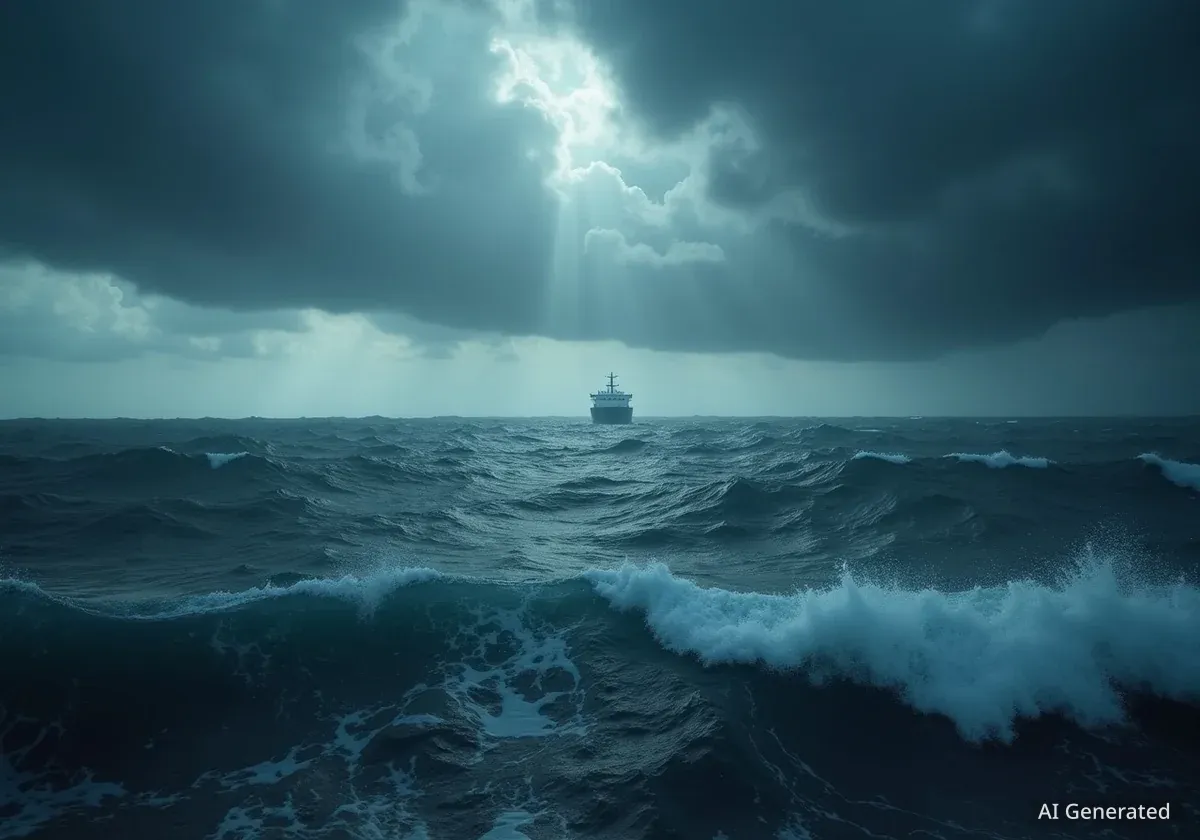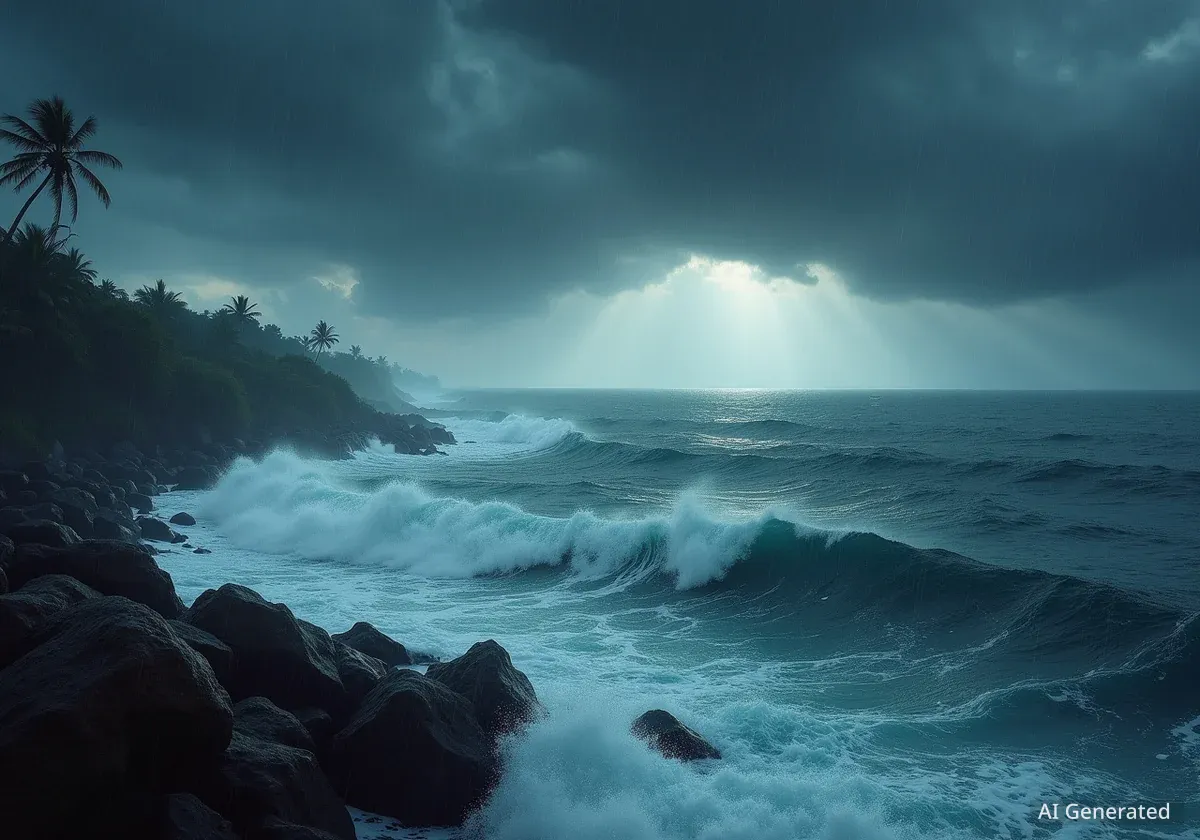Tropical Storm Gabrielle is steadily gaining strength in the open waters of the Atlantic Ocean and is on track to become the season's next hurricane by Sunday, according to the latest forecasts from the National Hurricane Center (NHC). While the storm currently poses no direct threat to land, its development is being closely watched by meteorologists.
Forecasters at the NHC noted that environmental conditions are becoming increasingly favorable for intensification over the next 48 to 72 hours. The storm is expected to move into an area with warmer sea surface temperatures and lower vertical wind shear, which are key ingredients for hurricane development.
Key Takeaways
- Tropical Storm Gabrielle is currently in the eastern Atlantic Ocean.
- It is forecast to strengthen into a Category 1 hurricane by Sunday.
- The storm is not expected to make landfall based on its current projected path.
- Coastal areas may experience indirect impacts such as high surf and dangerous rip currents.
Gabrielle's Current Position and Strength
As of the most recent advisory, Tropical Storm Gabrielle is located several hundred miles west of the Cabo Verde Islands. The storm is moving in a west-northwestward direction across the Atlantic. Maximum sustained winds are currently near 50 mph (80 km/h), with higher gusts.
The system is gradually becoming more organized, a sign that it is preparing for a period of intensification. Meteorologists use satellite imagery and data from hurricane hunter aircraft, when available, to assess a storm's structure and potential.
Understanding Storm Categories
Storms are classified based on their maximum sustained wind speeds. A tropical storm has winds of 39 to 73 mph (63 to 118 km/h). Once winds reach 74 mph (119 km/h), the storm is upgraded to a Category 1 hurricane on the Saffir-Simpson Hurricane Wind Scale.
The Path to Hurricane Status
The official forecast from the National Hurricane Center shows a clear path for Gabrielle to achieve hurricane strength. The storm is projected to continue its northwestward track over the open ocean for the next several days.
According to NHC specialists, the primary factors contributing to this forecast are a combination of warm ocean waters and a decrease in disruptive atmospheric winds. "The environment ahead of Gabrielle appears quite conducive for strengthening," one forecast discussion noted. "We expect to see a more defined eye feature develop as it intensifies."
What is Wind Shear?
Vertical wind shear is the change in wind speed or direction with height in the atmosphere. Strong wind shear can tear a developing storm apart, preventing it from organizing and strengthening. Gabrielle is moving into a region where this disruptive force is expected to be significantly weaker.
While the storm's intensity is expected to increase, its track keeps it far from the Caribbean islands and the United States East Coast for the foreseeable future. The long-range forecast suggests Gabrielle will eventually curve northward into the cooler waters of the North Atlantic, where it is likely to weaken later next week.
Potential Indirect Impacts
Even storms that remain far out at sea can have significant effects on coastal areas. Large ocean swells generated by Gabrielle are expected to propagate outward from the storm's center. These swells can travel for hundreds of miles, eventually reaching coastlines.
Coastal communities along the eastern seaboard of North America, as well as parts of Western Europe and Africa, could experience some of these effects. The primary concerns include:
- High Surf: Increased wave heights can lead to hazardous conditions for swimmers and boaters.
- Rip Currents: Powerful, narrow channels of water that pull away from the shore. These currents are a leading cause of drownings and become more frequent and dangerous when large swells are present.
- Shipping and Maritime Operations: Transatlantic shipping routes will likely be altered to avoid the storm's path, particularly as it strengthens into a hurricane.
Beachgoers and mariners are advised to monitor local weather forecasts and heed any warnings issued by lifeguards or coastal authorities. The NHC emphasizes that the risk of rip currents can be high even on sunny days when a storm is far offshore.
"It is important for the public to remember that a storm's direct impact is not the only danger. Swells generated by a distant hurricane can create life-threatening conditions at beaches far from the storm itself," an NHC statement advised.
Monitoring the Forecast
Forecasting the track and intensity of tropical systems has improved dramatically, but there is always a degree of uncertainty. The NHC uses a "cone of uncertainty" on its forecast maps to represent the probable track of a storm's center. It is important to note that impacts can be felt well outside of this cone.
Residents in coastal areas should always have a hurricane preparedness plan in place, regardless of any single forecast. Staying informed through official sources like the National Hurricane Center and local emergency management agencies is the best way to remain safe during hurricane season.
The development of Gabrielle serves as a reminder that the peak of the Atlantic hurricane season, which typically runs from mid-August through late October, is a time for heightened awareness. Forecasters will continue to issue advisories every six hours, providing updates on Gabrielle's progress as it moves across the Atlantic.


